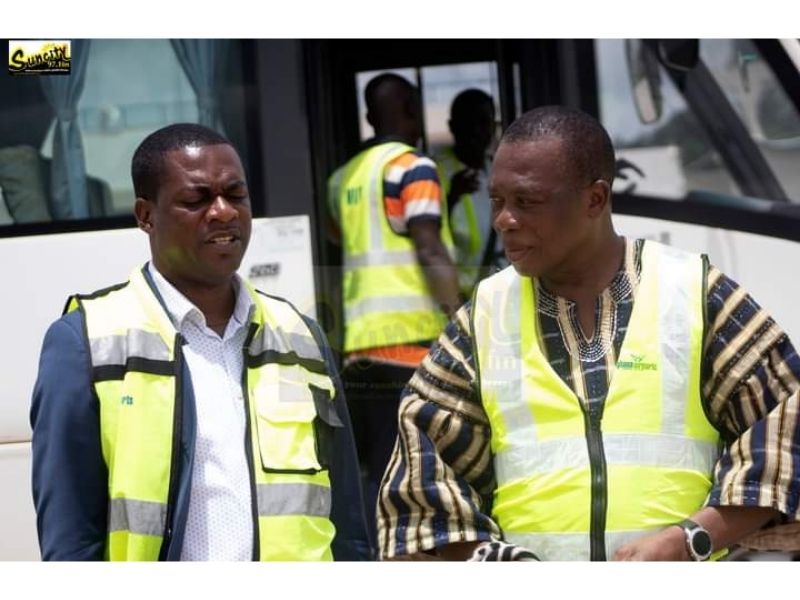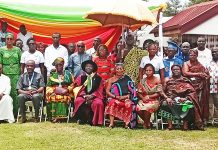
The Paramount Chief of Drobo Traditional Area in the Jaman South Municipality and Vice President of the Bono Regional House of Chiefs, Okokyeredom Sakyi Ako II, has suggested to the contractors working on the Sunyani Airport project to include a restaurant and an enhanced lightening system from the airport junction to the airport itself.
“I would like to suggest if the project could be expanded to include a restaurant for travelers, and also enhance the lightening system from the airport junction on the main Sunyani-Odumase road to the airport, as part of the phase two project if it was not in the initial project plan,” he said.
On behalf of the Bono Regional House of Chiefs (BRHCs), he commended the Ghana Airports Company Limited (GACL) and the management of the Sunyani Airport for the level of work done for effective and safe operationalisation of the airport.
Okokyeredom Ako II made the suggestion and commendation when he visited the airport to inspect the level of progress of the ongoing redevelopment project.
Okokyeredom Ako II observed that the completed asphalt, markings and grooving recommended by the safety officials of the GACL for improved safety is highly commendable. “The House of Chiefs is impressed with the level of work done so far, and we commend managers of the project,” he said.
“We are happy and satisfied with the progress of work, and I can say, very soon we will be flying from here,” he added.
GROOVING
The Manager of the airport, Mr. Maxwell Yeboah, said the facility would have been operational by now, but there was further recommendation by safety officials for grooving the completed runway for additional safety measure and modernisation purpose.
Grooving works by cutting grooves into the asphalt or concrete with diamond blades to create channels in the surface for the rain to escape into, thereby stopping the water settling on the surface, which can cause skidding. The grooves on the runway act rather like the grooved tread of a vehicle tyre.
The main function of grooving is to provide an escape route under the aircraft tyre for water on the runway to reduce or eliminate Dynamic Hydroplaning. Dynamic Hydroplaning, typically just referred to as hydroplaning, occurs when a tire in motion encounters more water than it can dissipate either through the tire treads or by pushing or shoving the water out of the way.
The conditions under which hydroplaning occurs are contingent on several factors, primarily speed and the fluid layer thickness as well as tire tread pattern and depth, tire pressure and runway texture. Hydroplaning can result in significantly longer aircraft stopping distance, greater sensitivity to cross winds, potential loss of directional control and a complete dependence on reverse thrust to stop. Grooving is so effective that in the presence of water, totally worn aircraft tires experience better braking on grooved pavement than newly treaded tires on non-grooved pavement.
In addition to greatly reducing or eliminating hydroplaning, grooving also has the benefit of reducing stopping distances on dry pavement through a process called tire tread interlock. Grooving also helps eliminate standing water on the runway and facilitates runway drainage, which also helps to disrupt ice formation.
Mr. Yeboah explained though the grooving-cutting lines on the runway for gradual reduction of speed limit of aircrafts is yet to be completed, the airport could be operating effectively while it was being done.
He said the “management and other stakeholders are therefore working towards a date to resume commercial flights before phase two of the rehabilitation work would begin” and added that the 1,500 metre-stretch of the runway has been completed and extension would be done during the phase two to make it 1900 metres.









